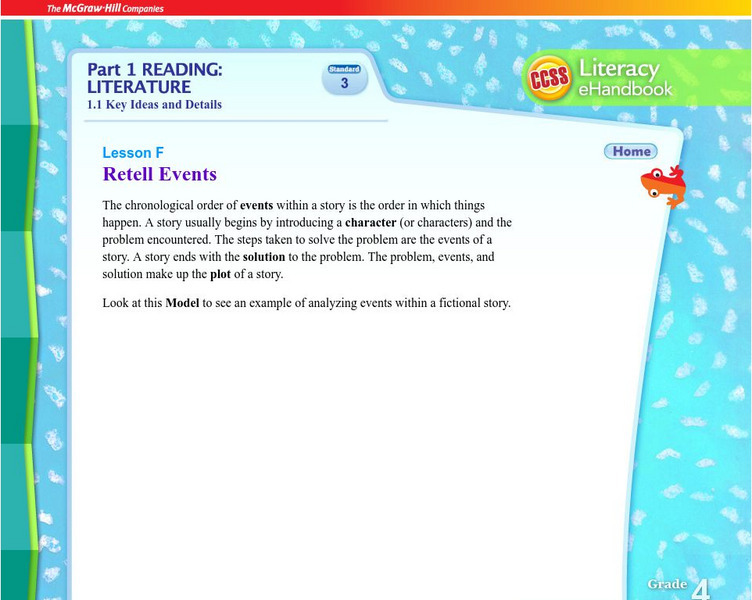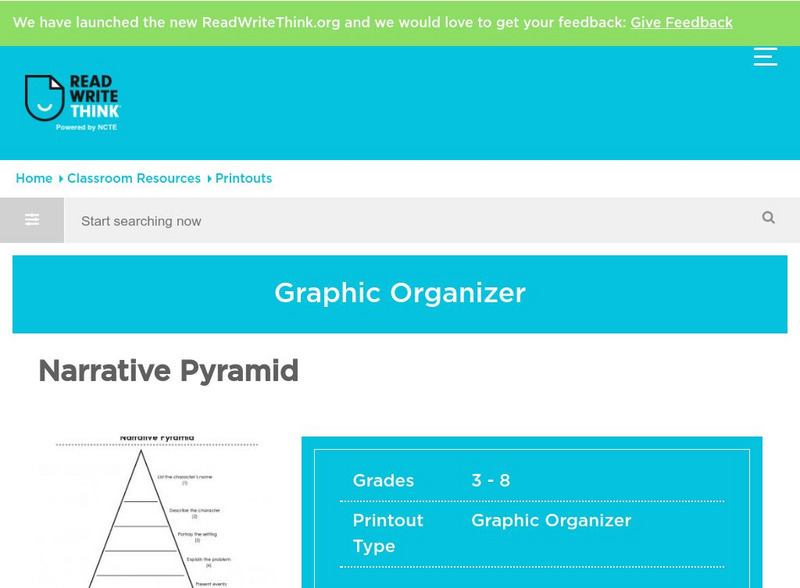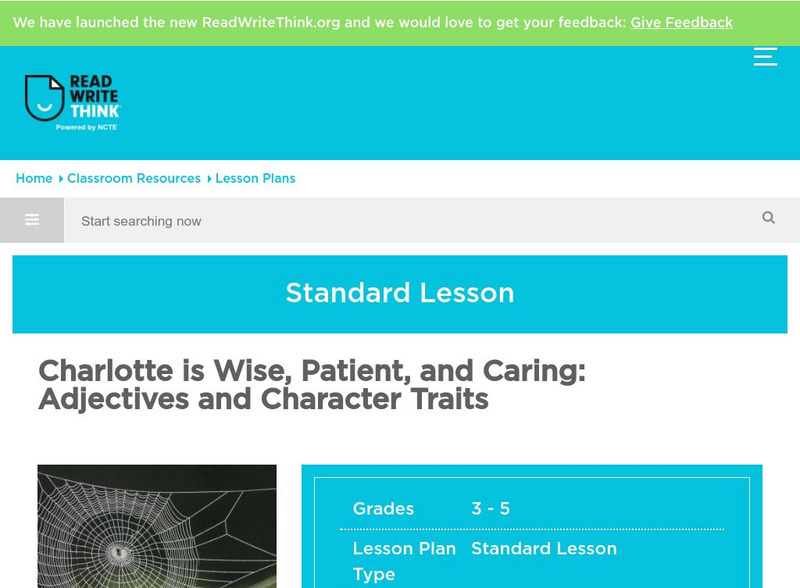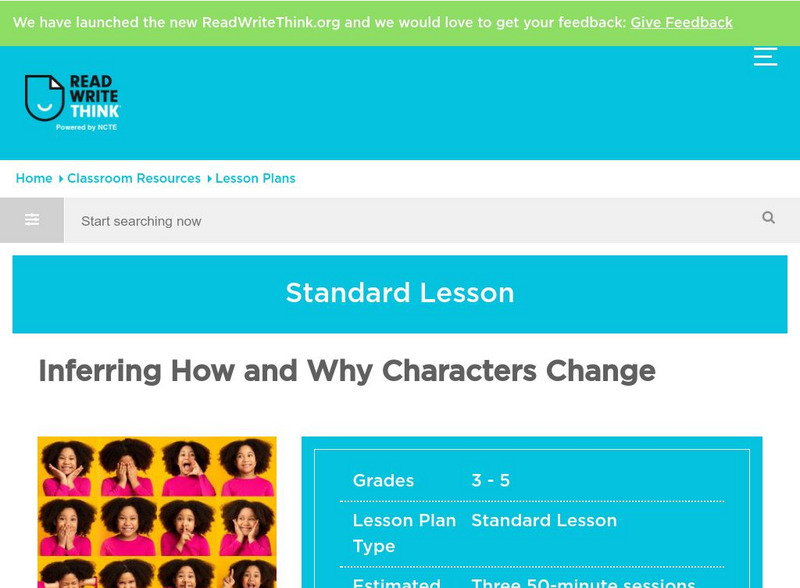Teachers.net
Teachers.net: The Gingerbread Man
Introduce your primary students to retelling and sequencing skills. Will also help move your students to higher-level thinking which deals with characters, setting, and plot. Site offers one week's worth of lessons.
Writing Fix
Writing Fix: A Picture Book Writing Lesson: Start With What Isn't There
In this lesson, students will describe a setting, attempting to set a mood for their readers in two paragraphs. Borrowing a technique from Stephen Kramer's two-page introduction to Caves, they will begin with a paragraph that explains...
Writing Fix
Writing Fix: 4th Grade Narrative Practice Prompt: Show Me Your Pride or Pleasure
This exercise assists fourth grade Nevada young scholars in preparing for their fifth grade Writing Exam. This exercise was designed to serve as a pre-writing activity for one of our three designated fourth grade practice prompts. The...
Writing Fix
Writing Fix: 4th Grade Narrative Practice Prompt: Awards for a Deserving Person
This exercise assists fourth grade Nevada students in preparing for their fifth grade Writing Exam. This exercise was designed to serve as a pre-writing activity for one of their three designated fourth grade practice prompts. The prompt...
Writing Fix
Writing Fix: Fracturing Tales Through Titles
Students read The Wolf Who Cried Boy by Bob Hartman and then write their own fractured fairy tales using first-person point of view and dialogue. Teacher and student instructions are provided along with student writing samples, an...
Writing Fix
Writing Fix: Just the Facts, Ma'am
Students read The Web Files by Margie Palatini and use the format to write three-scene detective stories of their own. Teacher instructions, student instructions, and student writing samples are provided, as well as an interactive...
Writing Fix
Writing Fix: A Chapter Book Writing Lesson: Beyond Once Upon a Time
Students are so used to hearing stories that start with the words Once upon a time and when writing their own stories, they often begin with these same words or with variations like One day I. Inspired by the novel Crispin by Avi This...
Writing Fix
Writing Fix: Action Words Bring Life to Setting Details [Pdf]
Students learn how to develop their ideas through description and action words through a story scavenger hunt. [PDF]
Writing Fix
Writing Fix: A Small Moment With an Important Person
A writer's workshop idea where young scholars brainstorm a list of people who are important to them as well as one or two times they remember being with each person. Students then use these ideas to write about a small moment with...
Curated OER
Mc Graw Hill: Part 1 Reading Literature: Folktale
Understand how to read and find the message the exist in a story. Learn how folktales include messages in their stories.
Curated OER
Mc Graw Hill: Part 1 Reading: Literature: Describe Characters
A reference guide on how to analyze characters in a story.
Curated OER
Mc Graw Hill: Part 1 Reading: Literature: Describe a Setting
Do you know how to find the setting of a story? Learn how to find the when and where a story took place on this site.
Curated OER
Mc Graw Hill: Part 1 Reading: Literature: Retell Events
Retelling a story shows a student's comprehension. Use this site to test your knowledge of how to retell events that happen in a story.
Curated OER
Mc Graw Hill: Compare Characters' Point of View
Defines and explains how to show how different characters think and feel.
Other
Write a Goofy Story #3
In this activity, students will complete humorous fill-in-the-blank prompts. After students complete each blank, students will view an automatically-generated story that contains their sentences organized in ways that will be funny.
Polk Brothers Foundation Center for Urban Education at DePaul University
De Paul University: Center for Urban Education: I Can Identify and Infer Character Traits[pdf]
A poster offers guiding questions to help students with identifying character traits. Guiding questions are also provided to help them support their inferences about the character traits.
ReadWriteThink
Read Write Think: Narrative Pyramid
A printable narrative pyramid where students can record information about a story including the character, setting, problem, main events, and solution. Directions on how to use this type of graphic organize as well as lists of teaching...
ReadWriteThink
Read Write Think: Book Report Alternative: Examine Story Elements Using Comic Stri
Comic frames are traditionally used to illustrate a story in a short, concise format. In this activity, young scholars use a six-paneled comic strip frame to create a story map, summarizing a book or story that they have read. Each panel...
ReadWriteThink
Read Write Think: Planning Story Characters Using Interactive Trading Cards
Young scholars use trading cards to examine fictional characters in a story.
ReadWriteThink
Read Write Think: Flying to Freedom: Tar Beach & the People Could Fly
Comparing and contrasting works and looking for underlying themes and messages are at the heart of this multicultural lesson plan. Provides links to several background resources, and suggestions for assessment.
ReadWriteThink
Read Write Think: Adjectives and Character Traits
Interactive lesson plan which allows for elementary students to learn the "Part of speech," concepts of adjectives as well as effective characterization techniques. Uses the story of Charlotte's Web.
ReadWriteThink
Read Write Think: It Doesn't Have to End That Way
Literary response and prediction are the focus of this lesson plan. Knowing story structure is an important skill for literary analysis, and this gives teachers a way to help learners develop this skill. Includes links to web resources,...
ReadWriteThink
Read Write Think: How and Why Characters Change
This lesson plan examines and makes inferences into the change and development in characters. Included in the lesson plan is an overview, practice, objectives, resources, preparation, and more.
ReadWriteThink
Read Write Think: Using Picture Books to Teach Characterization
Contains plans for two or three lessons that ask young scholars to examine characterization in picture books to use as models for their own writing. In addition to objectives and standards, this instructional plan contains links to sites...




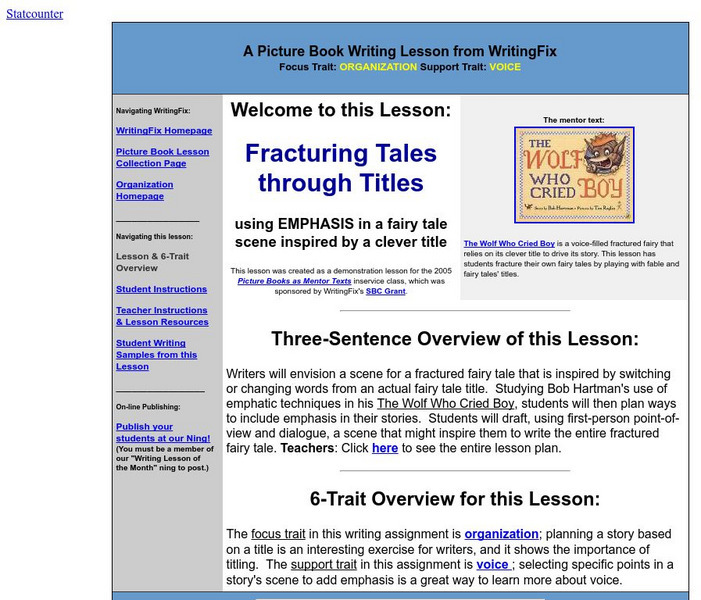
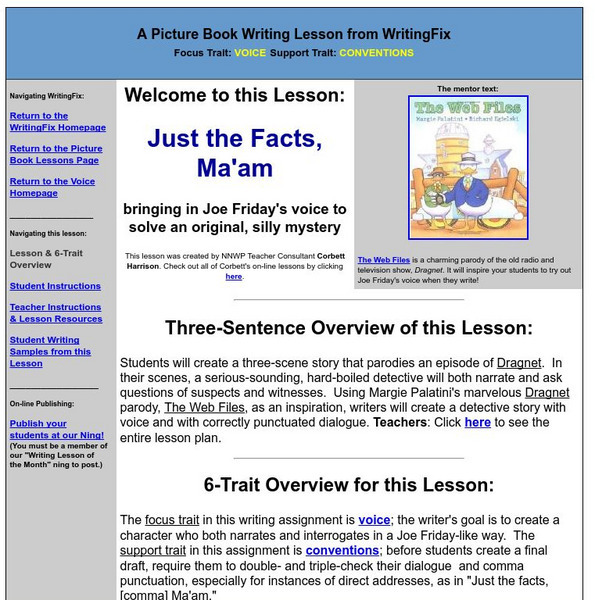

![Writing Fix: Action Words Bring Life to Setting Details [Pdf] Lesson Plan Writing Fix: Action Words Bring Life to Setting Details [Pdf] Lesson Plan](https://static.lp.lexp.cloud/images/attachment_defaults/resource/large/FPO-knovation.png)



